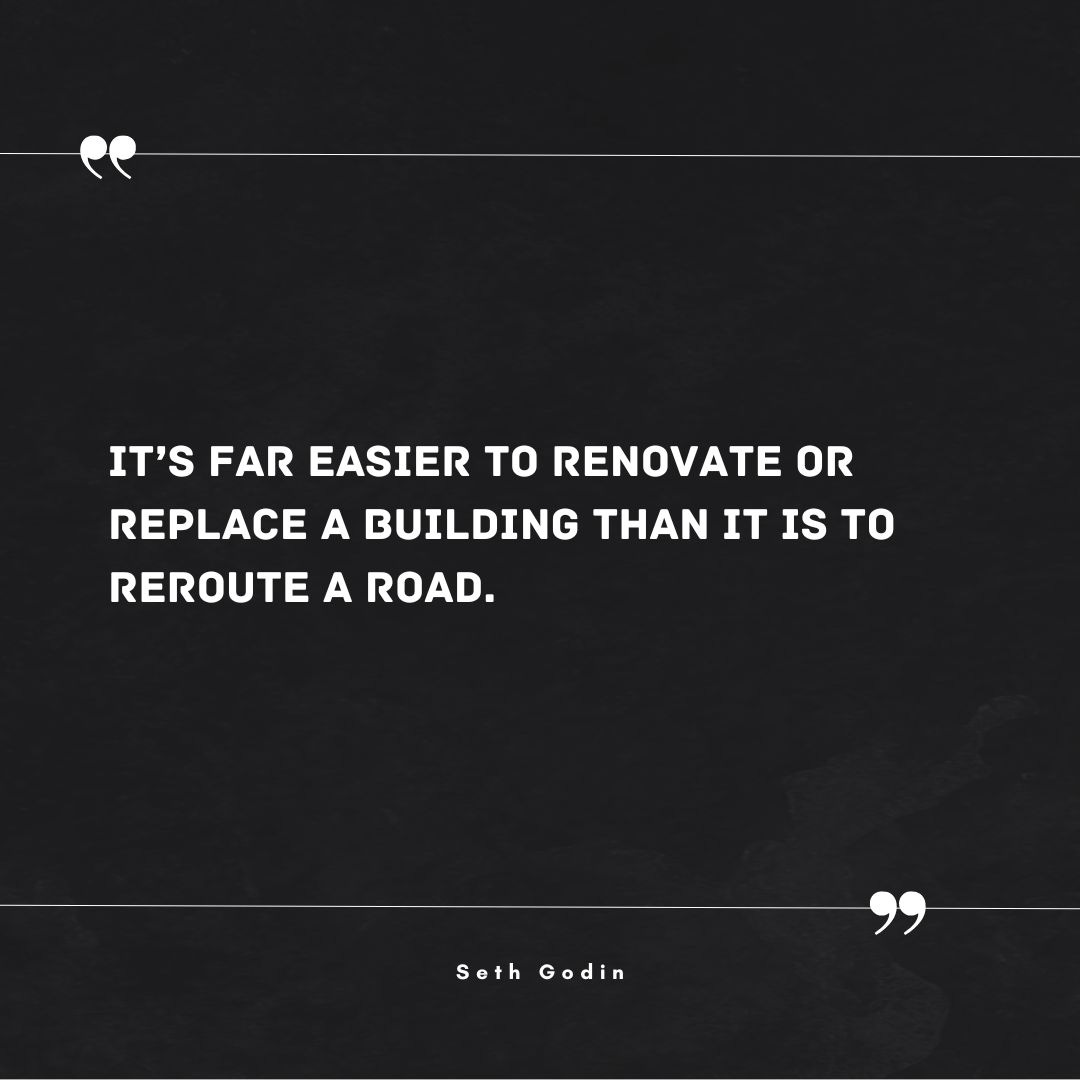🔺Listen to the essay🔺
Fresh out of college, I landed a job at a tech startup, though I didn’t even know what a startup was back then. Early on, I was introduced to the phrase “Zero to One,” popularized by Peter Thiel, and it has stuck with me.
At its core, the phrase refers to going from nothing to something. Specifically, it’s about innovation and not just iteration.
Zero to One = Innovation (read: leap)
One to N = Improvement (read: optimization)
Some of the key ideas shaped the way I approach opportunities and see history through the same lens.
The pull is often too strong to chase incremental improvements without realizing that true progress requires risk, creating what has never been done before. Zero to One thinking isn’t just notes on a startup.
It’s about building the future rather than managing the present.
It’s a multiplier when applied broadly.
All Roads Lead to You
The phrase “All roads lead to Rome” comes from the remarkable infrastructure of the Roman Empire. The network of roads sprawled across Europe, the Middle East, and even North Africa. Central to this network was the city of Rome, the capital.
Symbolizing that many different paths lead to the same place.
Today, our lives resemble that of Rome. All decisions and connections radiate from or converge back to a central point, the self.
Once some roads exist, the natural inclination is to stay on them, repairing and improving the buildings lining those roads rather than paving new ones.
That's the trap of One to N.
It’s comfortable and familiar, but it limits growth.
Early in life, embracing Zero to One thinking, paving new roads is crucial.
Moving to a new place.
Pivoting careers.
Building new relationships.
Potential shouldn’t be confined to roads laid down before.
The Interstate of the Mind
California offers great surfing, but what makes it accessible is the infrastructure. Interstate 5 connects San Diego to Orange County, linking my favorite surf spots seamlessly.
Fast forward two millennia since Rome, enter President Dwight D. Eisenhower, inspired by his experiences with Europe’s autobahns during World War II. He launched the Interstate Highway System in the 1950s.
Unlike the Roman roads that led to a singular point, the interstate system opened multiple new pathways.
The creation of the Interstate Highway System wasn’t just about building roads, but rather it was about creating new pathways for growth, connection, and opportunity across America.
Before the interstate system, highways were fragmented, limiting the movement of people and goods. The new network transformed the economy, opened regions, and reshaped daily life. While it may appear as an incremental improvement (Zero to N), it was truly a Zero to One leap. It fundamentally changes how Americans live and move, accelerating the nation’s growth.
Eisenhower chose to build new roads rather than maintain old ones.
Life presents a similar choice:
follow existing paths or forge new ones that unlock unknown possibilities.
Just as infrastructure enables geographic movement, personal infrastructure, such as talents, knowledge, and relationships, enables progress in life.
Many rely on old roads: familiar relationships, traditional careers, and predictable choices. Like patchy highways before the interstate, these paths work but limit how far and fast one can go.
Going Zero to One means building new roads by developing talents, cultivating relationships, and expanding knowledge to avoid confinement by outdated routes.
Just as the interstate connected distant cities and sparked growth, building new roads in life opens access to places never reached before.
The EPS Illusion: Are You Earning or Eroding?
While the idea behind Zero to One may seem intuitive, applying it successfully has proven far more difficult. Often leading to missteps rather than breakthroughs.
Public companies are often measured by EPS (earnings per share), a measure of how much profit a company makes for each share of stock. It’s important because investors use it to evaluate if a stock is worth buying compared to other investments (read: opportunities).
Ultimately, it’s a proxy for company value.
While EPS growth often aligns with value creation, it’s entirely possible to grow EPS while quietly eroding true business value.
Here are some historical examples:
General Electric (GE) in the early 2000s: EPS grew for a while, but true business quality declined in the shadows. Dragged down by overleveraged in low-quality businesses such as GE Capital: subprime assets.
IBM between 2012 - 2017: Bought back billions in shares to artificially boost EPS while revenue and innovation lagged. EPS looks solid. Yet, it underperformed peers such as Google, Amazon, and Microsoft.
“The majority of companies are willing to sacrifice long-run economic value to deliver short-run earnings is shocking.”
Translated to the lives of mortals, this is equivalent to buying an overpriced home to increase one’s net worth. Buying a $1M home makes the purchaser look wealthier. Even if other variables stayed the same (read: income).
When to build roads vs buildings
“Too many companies select statistics for their ubiquity rather than their utility.”
Too often, what plagues companies also impacts individuals.
We don’t only measure progress through income, job titles, or logos, but we often act as if we do.
Many decisions are based on what’s easily recognized rather than what’s genuinely beneficial, a creation of value.
By blindly adhering to proxy metrics, we destroy something far more valuable: Opportunities.
Consider the example of someone working two jobs:
First job in a traditional 9-5
Second job as a bartender at night.
The hours are long, but the income appears to be growing. On paper, it looks like progress.
Reality is that, over time, that person is exchanging good hours for bad dollars. No time to invest in new skills, no compounding of human capital.
In effect, they’ve traded potential for predictability.
Compare that to someone who steps back, perhaps working fewer hours in the short run to learn a trade, build a business, or go to school. Their earnings may dip temporarily, but they are laying the groundwork for something more durable.
In the long term, their trajectory likely improves, not because they worked harder, but because they invested wiser.
In other words, they built the roads rather than optimizing buildings on an existing one.
The question becomes, are you driving farther down the same road, or are you building new ones?
As a general rule, the earlier stages of life are best spent building roads to expand potential.
Later stages may call for optimizing what’s already been built.
This is not universal, but it’s a useful starting point.
The future isn’t found on the map. It’s paved by you.
⭕
Exclusive Essays
Private Podcast Episodes
The Full Library
For the Joy of Learning,
Su Hawn
🏕️ Life Happens Outside: Look From Different Angles - USA






